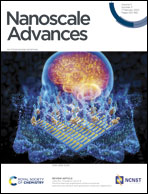Nanotechnology-based diagnostics and therapeutics in acute lymphoblastic leukemia: a systematic review of preclinical studies†
Abstract
Background: Leukemia is a malignant disease that threatens human health and life. Nano-delivery systems improve drug solubility, bioavailability, and blood circulation time, and release drugs selectively at desired sites using targeting or sensing strategies. As drug carriers, they could improve therapeutic outcomes while reducing systemic toxicity. They have also shown promise in improving leukemia detection and diagnosis. The study aimed to assess the potential of nanotechnology-based diagnostics and therapeutics in preclinical human acute lymphoblastic leukemia (h-ALL). Methods: We performed a systematic search through April 2022. Articles written in English reporting the toxicity, efficacy, and safety of nanotechnology-based drugs (in the aspect of treatment) and specificity, limit of detection (LOD), or sensitivity (in the aspect of the detection field) in preclinical h-ALL were included. The study was performed according to PRISMA instructions. The methodological quality was assessed using the QualSyst tool. Results: A total of 63 original articles evaluating nanotechnology-based therapeutics and 35 original studies evaluating nanotechnology-based diagnostics were included in this review. As therapeutics in ALL, nanomaterials offer controlled release, targeting or sensing ligands, targeted gene therapy, photodynamic therapy and photothermic therapy, and reversal of multidrug-resistant ALL. A narrative synthesis of studies revealed that nanoparticles improve the ratio of efficacy to the toxicity of anti-leukemic drugs. They have also been developed as a vehicle for biomolecules (such as antibodies) that can help detect and monitor leukemic biomarkers. Therefore, nanomaterials can help with early diagnostics and personalized treatment of ALL. Conclusion: This review discussed nanotechnology-based preclinical strategies to achieve ALL diagnosis and therapy advancement. This involves modern drug delivery apparatuses and detection devices for prompt and targeted disease diagnostics. Nonetheless, we are yet in the experimental phase and investigational stage in the field of nanomedicine, with many features remained to be discovered as well as numerous problems to be solved.

- This article is part of the themed collection: Recent Review Articles


 Please wait while we load your content...
Please wait while we load your content...